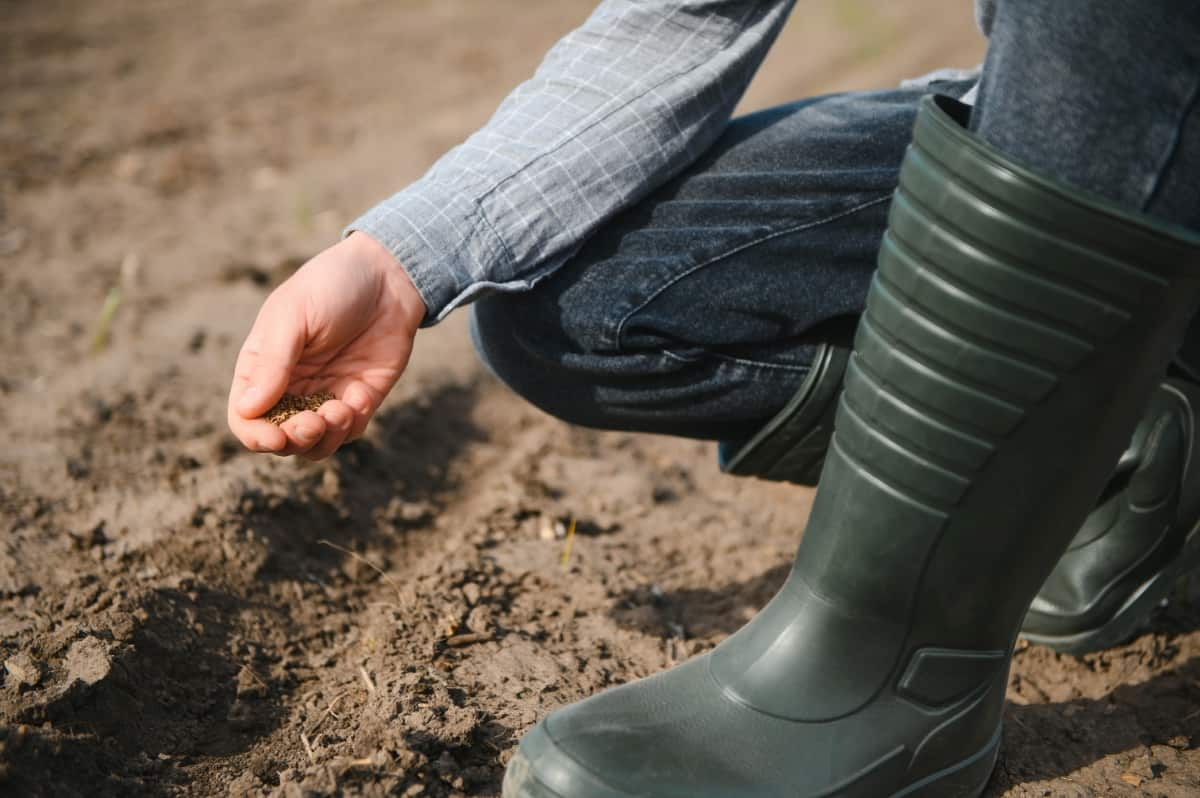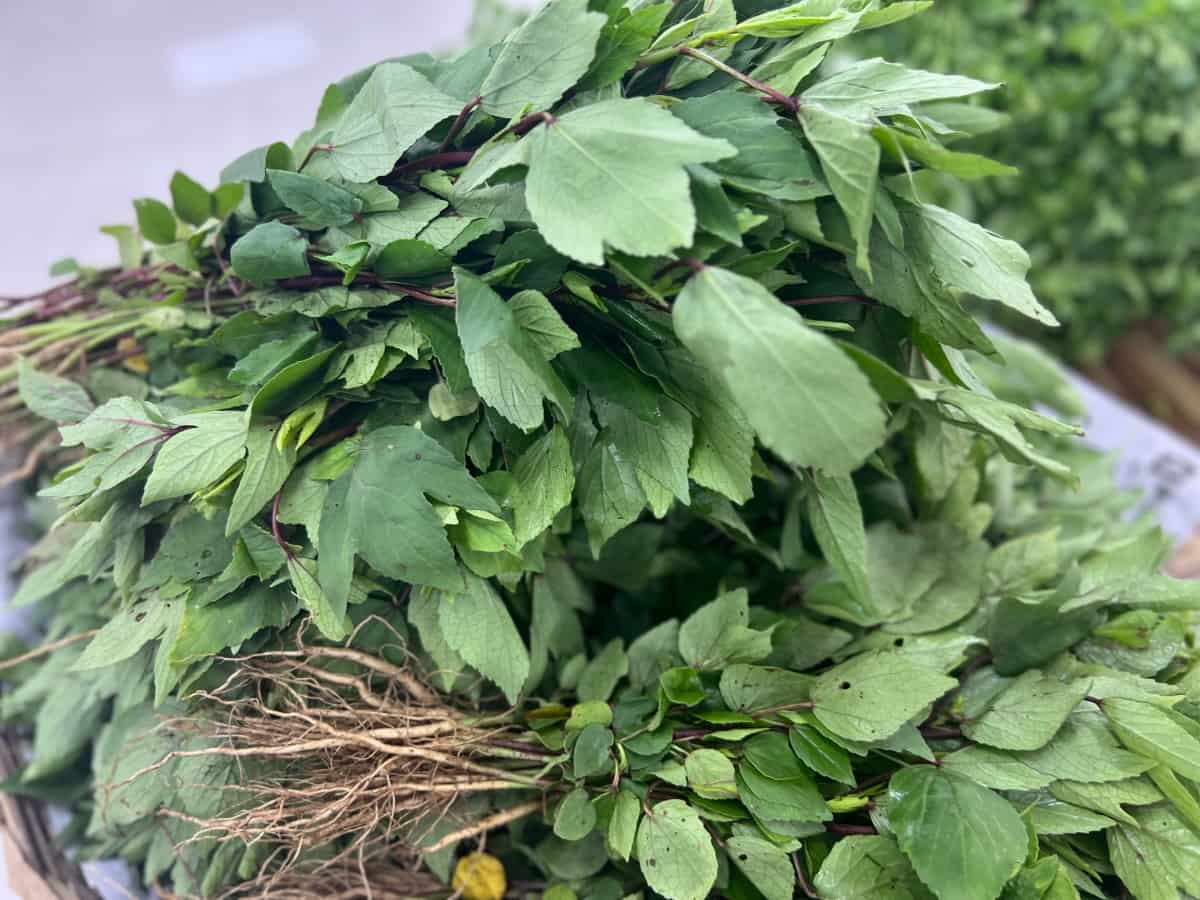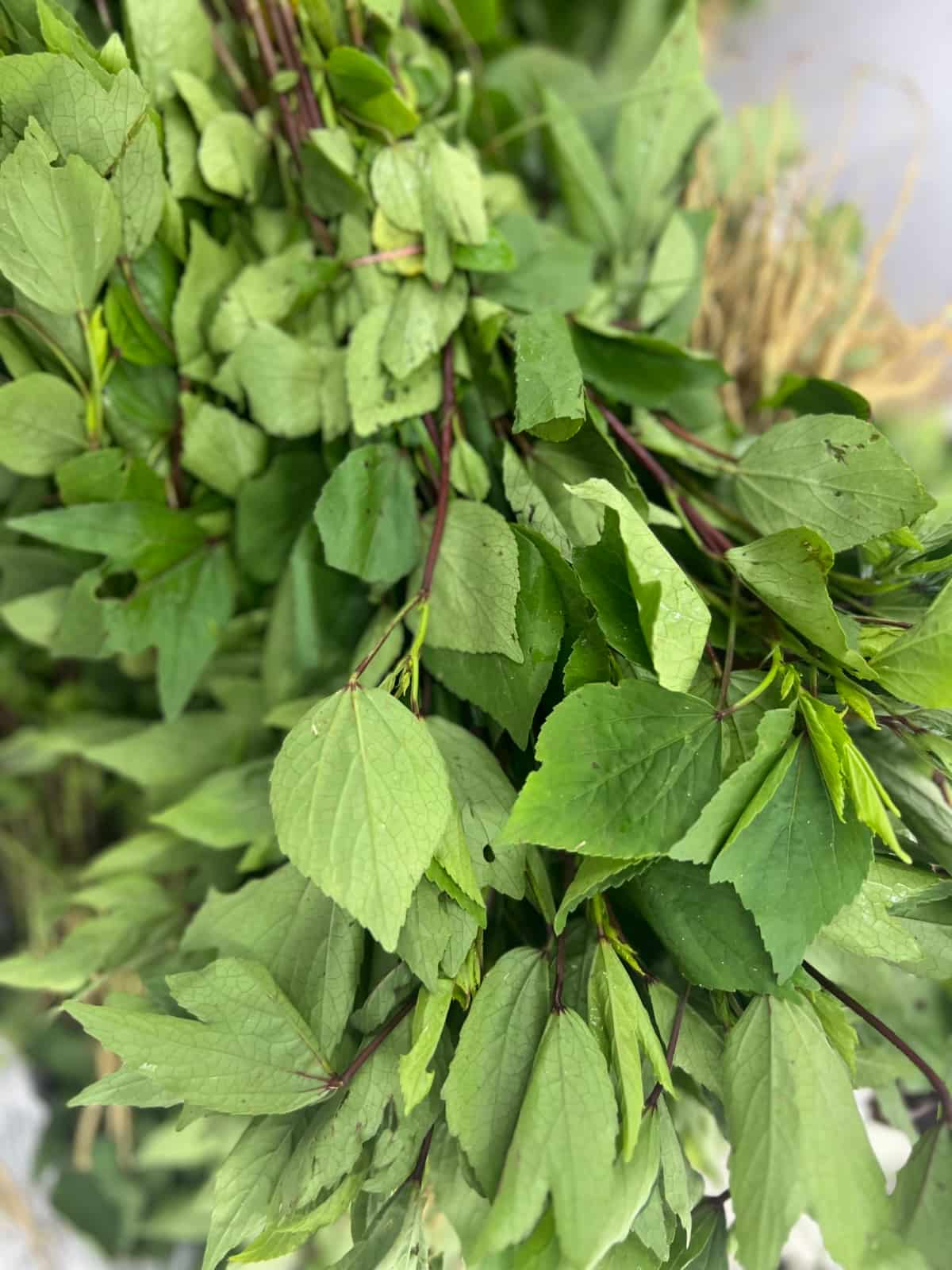Gongura is a leafy plant cherished in Indian cuisine for its tart flavor, commonly used to make pickles, dals, and savory dishes. Indians growing Gongura in their homes in the US find it not only a taste of home but also an engaging gardening project. Growing Gongura in the USA, particularly in a home garden, brings a piece of India’s culinary heritage to your backyard. This plant thrives in warm climates, making it suitable for many areas in the United States.

The backyard is a personal, intimate space where one can nurture Gongura from seedling to harvest, enjoying the freshest leaves from their soil. Growing Gongura in the backyard involves understanding the plant’s needs, from the right location to proper soil preparation and ongoing care, including watering, fertilizing, and pruning.
How to Grow Gongura in the Backyard from Seeds and Stem Cuttings
Choosing the Right Location
The first step in growing Gongura in your backyard is finding the perfect spot. Gongura loves the sun, so choose an area with plenty of sunlight—at least six hours a day. The place should also be shielded from strong winds damaging the plant. A south-facing location often works well in the Northern Hemisphere.
Accessibility to water is another consideration; your Gongura plants will need consistent moisture, so being close to a water source will make it easier to keep them hydrated. Finally, think about the space each plant will need. Gongura can spread out as it grows, so ensure enough room in your home garden for the plants to flourish without being overcrowded.
Preparing the Backyard Soil
The soil in your backyard is the foundation of healthy Gongura plants, whether you’re starting from seeds or stem cuttings. Begin by clearing the chosen area of weeds and debris. Gongura prefers well-drained, fertile soil rich in organic matter. You can improve your backyard soil by adding compost or aged manure, providing the nutrients the Gongura needs to grow.
In case you missed it: Top 9 Farming Apps in the USA For Smart Agriculture Solutions

The soil needs to be neither too basic nor too sour. If it’s really sticky or grainy, add stuff like compost to make it better. Ensure that the planting site does not collect standing water, which can rot the roots of your Gongura plants. Once the soil is loose, well-aerated, and nutrient-rich, it’s ready for planting.
Steps for Sowing Gongura Seeds
To start growing Gongura from seeds in your backyard, timing is crucial. Sow the seeds during late spring or early summer, ensuring the soil has warmed up. Put them about a quarter inch deep in the soil you’ve prepared, and space them about a foot apart so they have space to grow.
After planting, water the area gently but well to make the soil damp, but don’t disturb the seeds. Maintain soil moisture until seed germination, typically within one to three weeks. Watch for the first sprouts, and make sure they’re not overcrowded. Thin the seedlings if necessary, so they are spaced about a foot apart, allowing ample room for each plant to mature.
Propagate Gongura from Stem Cuttings
Propagating Gongura from stem cuttings is a quick way to grow new plants in your backyard. Choose healthy stems from an existing Gongura plant and cut a 4 to 6-inch segment just below a leaf node. Take off the lower leaves of the cutting, optionally use rooting hormone, and plant it in a pot with well-draining soil.
Maintain soil moisture and place the pot in a warm, well-lit area away from direct sunlight. After a few weeks, once roots have developed, transplant the Gongura cuttings into your backyard. Dig a hole that is twice the size of the roots and cover it with soil. Water it well to help the new plant establish.
Care for Gongura Plants
Caring for Gongura plants in your backyard involves regular watering, feeding, and pruning. Plant Gongura in well-drained soil, water it deeply for strong roots, but let the soil dry a bit between watering to avoid root problems. During the growing season, feed the plants with a balanced, all-purpose fertilizer to ensure they get the necessary nutrients. Pruning is essential for Gongura to promote bushier growth and prevent any diseases. Trim away dead or yellowing leaves and stems overgrown or touching the ground.
Control Pest and Diseases
Managing pests and diseases in Gongura is vital to ensure healthy growth. You can keep most issues at bay with regular monitoring and natural treatments. Encourage beneficial insects like ladybugs that feed on aphids, a common pest. For leaf-eating insects, neem oil is a natural deterrent and is safe for the plant.
If you notice fungal infections, reduce watering to prevent excess moisture, and consider using a baking soda and water mixture as a fungicidal spray. Maintaining good air circulation by not overcrowding plants and removing any affected leaves promptly can also prevent the spread of diseases.
Harvesting Gongura Leaves
Gongura leaves are best harvested when they are tender and flavorful, which is typically before the plant flowers. Cut the leaves from the outer part of the plant to encourage new growth from the center. Harvest in the morning when the plant’s moisture content is highest. Utilize clean scissors or your fingers to gently remove the leaves, ensuring that a sufficient number of leaves remain on the plant for its ongoing growth.
In case you missed it: Organic Farming Business Plan in the USA for Maximizing Yield and Profit

Growing Gongura in Containers
Growing Gongura in containers is a practical option for those with limited backyard space. Choose a large pot with drainage holes to give the roots ample room to expand. Put a mixture of soil and compost into the container to give the plants the nutrients they need.
Plant Gongura seeds or stem cuttings in the container, ensuring enough growing space. Place the container in a sunny spot and water the plant regularly, letting the top inch of soil dry out between waterings. Add plant food every few weeks using a general liquid fertilizer, and trim when necessary to keep the plant healthy.
In case you missed it: How to Start Alfalfa Farming in the USA: A Production Guide of Planting to Harvest

Conclusion
Growing Gongura at home is a simple and satisfying way to bring a taste of India to your backyard, providing fresh, tart leaves for your culinary creations right from your garden or container. With basic care, these robust plants will flourish, offering a bountiful harvest for your Indian dishes.
- Ultimate Guide to Ossabaw Island Hog: Breeding, Raising, Diet, and Care
- Ultimate Guide to Juliana Pig: Raising Facts, Size, Diet, Care, and Lifespan
- Raising Lleyn Sheep: Disadvantages, Price, Uses, Characteristics, and Care
- Ultimate Guide to Meishan Pig: Breed Facts, Breeding, Raising, and Care
- Ultimate Guide to Teacup Pigs: Raising, Diet, Lifespan, Cost, and Care
- Guide to Raising Poll Dorset Sheep: Facts, Profile, Characteristics, Uses, and Care
- Ultimate Guide to Bighorn Sheep: Characteristics, Diet, Lifespan, Breeding, and Lifecycle
- Ultimate Guide to Raising Katahdin Sheep: Farming Facts, Breed Profile, Uses, and Care
- Ultimate Guide to Raising Oreo Cows: Belted Galloways Farming Facts, Profile, Uses, and Care